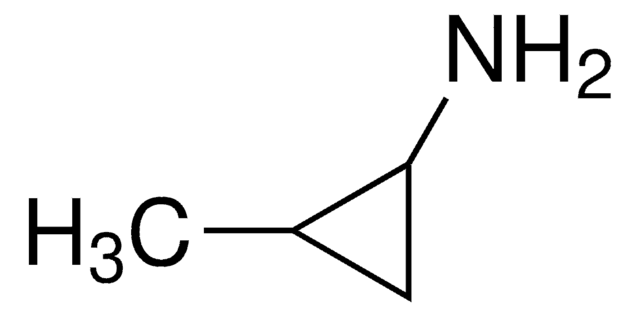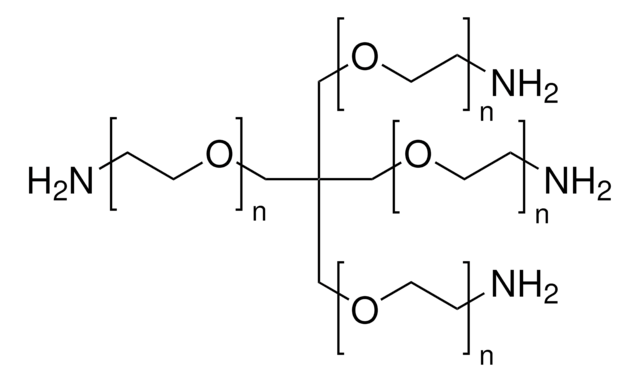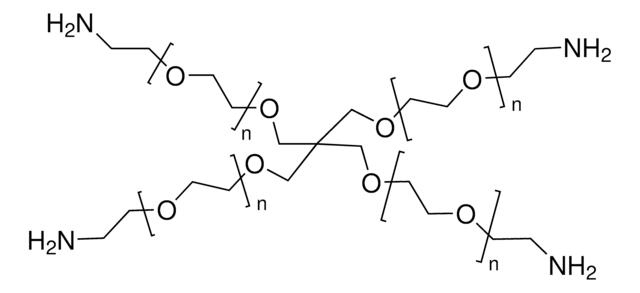752460
Poly(ethylene glycol) diamine
average MN 10,000, cross-linking reagent carboxyl reactive, amine
Sinónimos:
Poly(ethylene glycol) bis(amine), Polyethylene glycol, O,O′-Bis(2-aminoethyl)polyethylene glycol, Diaminopolyethylene glycol, PEG-diamine, Polyoxyethylene bis(amine)
About This Item
Productos recomendados
Nombre del producto
Poly(ethylene glycol) diamine, average Mn 10,000
Formulario
powder or solid (or chunk(s))
Nivel de calidad
mol peso
average Mn 10,000
idoneidad de la reacción
reagent type: cross-linking reagent
reactivity: carboxyl reactive
mp
56-60 °C
Ω-final
amine
α-final
amine
arquitectura del polímero
shape: linear
functionality: homobifunctional
cadena SMILES
NCCOCCOCCN
InChI
1S/C6H16N2O2/c7-1-3-9-5-6-10-4-2-8/h1-8H2
Clave InChI
IWBOPFCKHIJFMS-UHFFFAOYSA-N
¿Está buscando productos similares? Visita Guía de comparación de productos
Categorías relacionadas
Aplicación
Código de clase de almacenamiento
10 - Combustible liquids
Clase de riesgo para el agua (WGK)
WGK 3
Punto de inflamabilidad (°F)
Not applicable
Punto de inflamabilidad (°C)
Not applicable
Elija entre una de las versiones más recientes:
¿Ya tiene este producto?
Encuentre la documentación para los productos que ha comprado recientemente en la Biblioteca de documentos.
Los clientes también vieron
Artículos
The use of hydrogel-based biomaterials for the delivery and recruitment of cells to promote tissue regeneration in the body is of growing interest. This article discussed the application of hydrogels in cell delivery and tissue regeneration.
Global Trade Item Number
| Número de referencia del producto (SKU) | GTIN |
|---|---|
| 752460-5G | 4061833600610 |
| 752460-1G | 4061832907307 |
Nuestro equipo de científicos tiene experiencia en todas las áreas de investigación: Ciencias de la vida, Ciencia de los materiales, Síntesis química, Cromatografía, Analítica y muchas otras.
Póngase en contacto con el Servicio técnico







